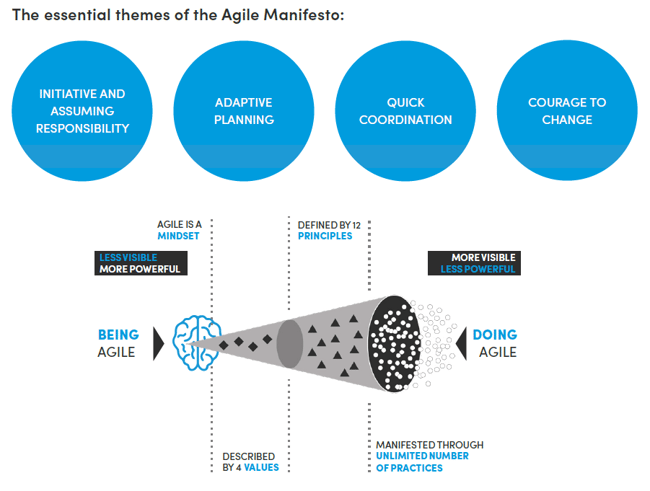| NEWS
AGILE EVENT MANAGEMENT – MORE THAN FLEXIBILITY
In times when the world seems to be changing increasingly quickly, conventional project management methods are reaching their limits. Flexibility alone is no longer enough to meet the demands of a constantly changing environment. Instead, agile approaches are needed to achieve results faster and more effectively and to use budgets wisely.
/AGILE.png?width=650&height=421&name=AGILE.png)
The agile mindset describes the attitude that people can expand their skills through learning. This is in contrast to the fixed mindset, which assumes that skills are innate - or can no longer be developed after a certain age. In the fixed mindset, challenges are therefore seen as a danger. Dangers to which it is better not to expose oneself. The fear of failure prevents the acceptance of the challenge as an opportunity. On the other hand, the core of the agile mindset is to use precisely these opportunities to constantly develop further. With the help of trials, errors and effort, information is gathered that makes learning possible in the first place and thus creates the basis for mental growth. The constant desire to become better is the inner drive of the agile mindset. For the successful introduction of Agile Event Management, this drive serves as the basis. The question is, how can the already naturally existing agile mindset in each of us be promoted and developed?
AGILE PRINCIPLES
For teams that have worked in classic project management for a long time, the acceptance of change requests in the course of the project can be a great challenge. In the agile process, on the other hand, changes are not only allowed but also welcomed. Instead of seeing change as a problem, it is seen as an opportunity. Of course, not every change makes sense, so it is important that the team has good consulting skills to advise and convince the client accordingly. The iterative approach with short coordination intervals makes it possible to concentrate on the work in the respective cycle of the iteration and to avoid unnecessary work. Through the constant reviews, project requirements can be questioned and changed to achieve the highest possible customer satisfaction. However, in hierarchical organisations it can be a challenge to bring together all responsible decision makers for the review. Therefore, review dates should be scheduled periodically during the course of the project.
The retrospective is a central part of the team's continuous improvement process. The team regularly reflects on how it can become more effective and adjusts its behaviour accordingly. In classic project management, there is usually only one "lessons learned" meeting after project completion with a written analysis, which in most cases has no influence on subsequent projects. Regular retrospectives during the course of the project, however, make it possible to implement the improvement directly and thus increase the project result.
Just as important as the retrospective, however, is the self-organisation of the team in agile project management. This is about the team deciding on its own responsibility which tasks it will work on and how it will use its capacities. Each team member decides independently which work package to work on next and supports the team as they see fit. Of course, the team also needs leadership. However, contrary to a hierarchical structure, this is done at eye level and should aim to get the best out of each individual in an intrinsically motivated way. By strengthening self-organisation, the team takes overall responsibility for the success of the project and feels equally significant.

If you want to learn more about the conception, planning and implementation of Agile Event Management click here.
RELATED ARTICLES:
SHINE: SUCCESS FORMULA FOR EVENTS
DE&I AS KEY TO SUCCESSFUL AGENCY MANAGEMENT
DIVING INTO TRENDS & EVENTS WITH ... CHRISTOPHER WERTH
Contact
/Landingpage/images/contact.png?width=76&name=contact.png)
